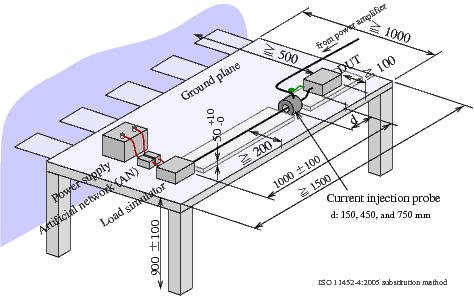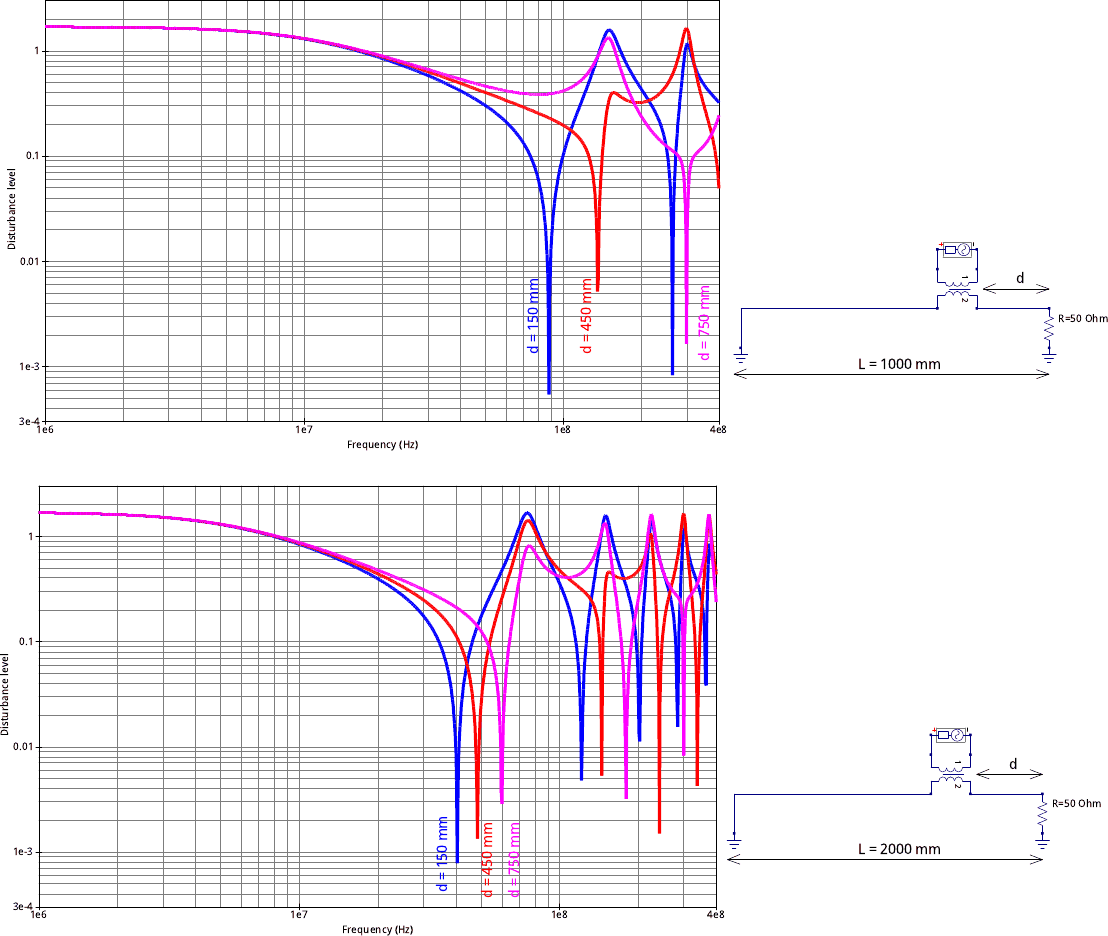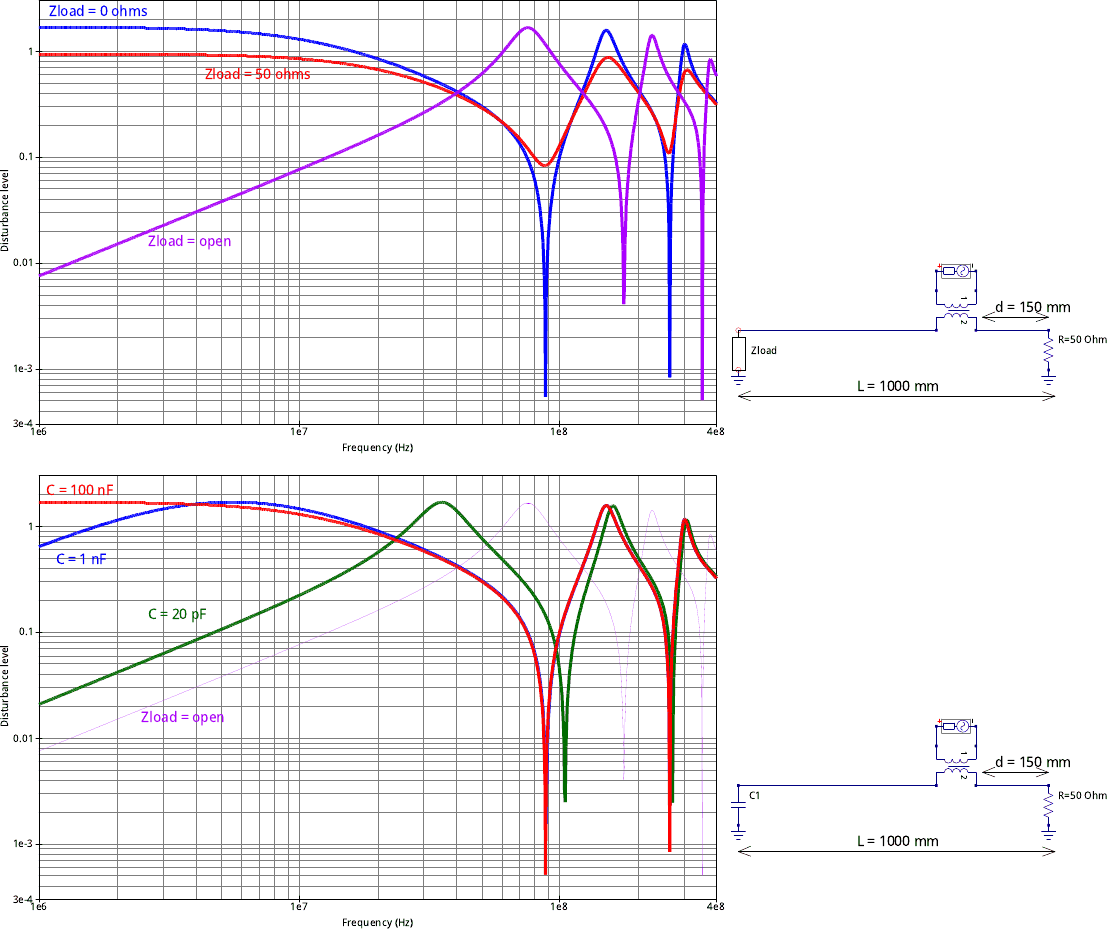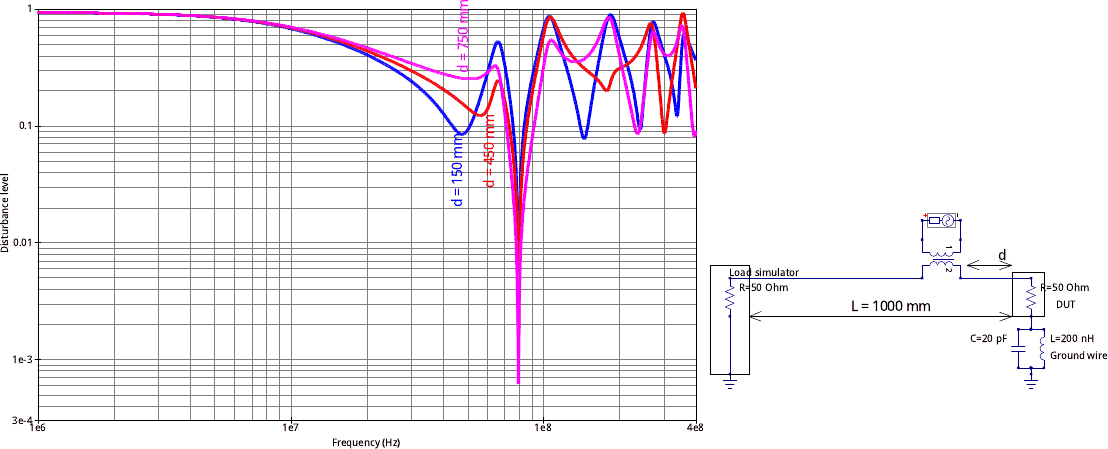
T. Sato, 2016-10-01
For ISO 11452-4:2005 substitution method, we usually use 1 m (± 0.1 m) test harness and test up to 400 MHz. λ/4 is about 0.2 m at 400 MHz even in free space, which is much shorter than the test harness length. For ISO 11452-4:2011 substitution method, longer test harness length of 1.7 m (−0 m +0.3 m) is now specified.

The test harness runs 5 cm above the ground plane, and we can consider it as a transmission line which has specific, but not necessarily known, characteristic impedance. Each sides of the transmission line will be terminated by the DUT and the load simulator, which are rarely matched with the transmission line's characteristic impedance.
As a result, test harness may resonate, and current injection probe position, test harness length, and termination impedance at both sides of the test harness will have significant influence on the test results.
In this note, I will show some estimation of the influences of those factors. Here, I used simple transmission line model with lossless transmission line, so the simulation is not very accurate.
In this example, I assume DUT impedance = 50 Ω and load simulator impedance = 0 Ω. At L − d = λ/4, test harness at load simulator side will cause resonation and the load side impedance seen from the injection probe will become very high, hence injected current will become very low.
The resonant frequency can be moved by changing the injection probe positions d. So, repeating tests for different injection probe positions may reduce the possible negative influences from the test harness resonances.
As you can see in the following figures, this is probably very effective for L = 1000 m. However, this may become less effective for longer test harness, such as L = 2000 m.

When injection probe position is changed and the length becomes 550 mm, λ/4 frequency is now becomes 136 MHz which cause dip around the frequency. You can see this as the first dip on red curve in the first chart.
At higher frequencies, test harness between the injection probe and each sides of the test harness approaches λ/4 and its multiples, which cause more complex behaviors.
Load simulators will frequently be used in place of actual loads, but load simulators may not represent actual load impedance.
At lower frequencies, current injection clamp will inject current flow through load simulator, entire test harness, DUT and ground plane. If load simulator has very high common mode impedance, injected current will become very low even if DUT has low impedance.
ISO 11452-1:2015 now states that common mode impedance and/or differential mode impedance should be considered. The standard also suggests to terminate the lines with capacitors, which may help avoid this problem.

In ISO 11452-4, DUT which will be connected to earth in real applications will be placed on 5 cm insulation support and be connected to ground plane with a short ground wire, even if the DUT will actually be directly mounted to the vehicle chassis.
The DUT has capacitance (C) between the ground plane and the ground wire has inductance (L), so they cause parallel resonance and cause high impedance at the resonant frequency (f = 1 / 2π√LC) which will disturb current injection around the frequency.
